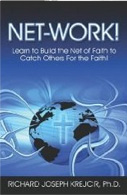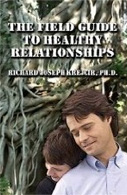"The Third Woe Commences"
General idea: The two witnesses complete their testimony to the extreme exasperation of the beast, who declares all-out war against them. The beast rises out of his bottomless pit and kills them, and then their bodies are defiled as they lie in the streets. Everyone sees this madness, but no one is allowed to either take care of their bodies properly or celebrate their life. Then, after all seems lost, the Lord returns them to life-resurrects them-and they stand up and strike terror in their tormenters. As this is happening, they also are rising to Heaven; a terrible earthquake occurs and those remaining are either terrified and/or are giving glory to God. Then comes the warning that, although this terror is over, more is to come.
Vs. 7-14: This passage describes many themes and metaphors from the Old Testament, such as the visions of Zachariah and the "kingdoms" in Daniel. We have to realize that one of the main, interpretive aspects of Revelation is that it borrows heavily from the entire Old Testament, not just from Daniel. If you do not know the Old Testament, you will not know much about the New Testament, especially Revelation and thus read into it what we think and not gain what is actually there. This leaves the interpretation up to the reader who may not know the Bible as well as he or she might think, and thus may read into it only what he or she thinks. This would be utterly ridiculous to the original readers and Author. In conjunction, many Jewish texts ("War Scroll" from the Dead Sea Scrolls) predicted a final, climatic, all-out battle at the end of days, giving those who are faithful to God victory, but only after suffering beforehand and Johns readers new this and this type of apocalyptic literature (2 Kings 2:1-12; Ezek. 37; Zech. 4:1-14; 14:1-3; Daniel 8; Matt. 17:3-4; Luke 10:1).
· The beast in the Original Greek refers to a "bestial" man, one who is brutal, savage, and ferocious. In context, this in its context infers that the sea is a dwelling place for monsters, suggesting terrifying, repulsive, and evil things that seek to lead the world and the Church astray. This passage also depicts how God is still in control even over the beast, and in times of insurmountable chaos and suffering (Job
· Abyss means "very deep" (the Greek Septuagint translation of the Old Testament word for bottomless). Jewish tradition saw this as a literal, subterranean place, used for the imprisonment of evil demons and Satan, which was actually on the earth (for more detail see Rev. 9:1-11 study). John is using this image to show the beasts "demonic character" (Gen. 1:2;
· Their bodies. The denial of burial was considered one of the most grievous insults and a great cruelty and sin in ancient cultures (Deut. 21:22-23; Isa.
· Great city likely refers to
· Figuratively refers to the contrast between Jewish and Roman authorities, both of whom are performing evil. Revelation often gives clues to those who are not 1st century Jew's who may not understand the metaphors of this type of literature that is based on Old Testament imagery and 1st century life and customs. We can understand just as well when we seek to understand the Old Testament and get a better handle on the original language and culture.
·
·
· Where also their Lord was crucified is perhaps an
· Three and a half days refers to the bodies that were decaying and/or the time of their prophesying; it denotes a short time (see last study). Some see this as the last half of the great tribulation, may be possible, however this is not shown in the text or context either.
· People, tribe, language refers to the people, their political power, and their allegiance to either God or to evil. A warning is given that allegiance must be pure loyalty to Christ and His Kingdom, and must come first in our lives. When we are in Christ, we are part of His greater Kingdom-more than just our race or nationality (Psalm 33:10; Phil
· Sending each other gifts refers to pagan celebrations; it probably does not refer to The Feast of Purim, the Jews' celebration of their deliverance from the Persians (Esth.
· Those who live/dwell on the earth indicates that there are two types of people-those who belong to God and those who oppose Him. Thus, all of humanity either belongs to God or are rebellious, rejecting His Truth and hostile to Him, choosing to remain in their sin (Rev. 6:10).
· Breath of life from God entered them. This refers to a spectacular validation of authentic faith. The context emphasizes that these are the good churches that stay faithful, and what can happen for us when we, too, stay faithful. However, there are many theories. If these are literal people-which is possible-they are physically resurrected as Christ was. If they represent the Church, it means vindication and victory (Gen. 2:7; Ezek. 37:5, 10; John
· Went up to heaven in a cloud is referring to how Elijah ascended (2 Kings
· Seven thousand people were killed is sometimes referring to a tenth of the population, or a remnant (1 Kings
· Earthquake. This theme is associated with end times and divine visitations (Ex. 19:18; Is. 2:19; Hag. 2:6; Zech. 14:4-5; Ezek. 38:19-20; Amos 8:8; Rev. 6:12).
· Gave glory to the God of heaven. This probably not an act of genuine repentance, but they were terrified to realize that Christ is the real Lord rather than the evil people or political shenanigans they had put their trust in.
· Second woe. This refers to look out, terror is coming, or a stern warning of more trouble to come (Amos. 5:18-6:1; Rev. 6:10;
The two witnesses model to us what is important in our Christian life-and that is faithfulness. We must exhibit a willingness to withstand and endure persecution and to face our fears while looking to our Lord. If not, we will look to our fears and turn our face from our Lord; that will only bring us haplessness and distress. And, the payback is God is faithful; He gets us through and vindicates us. The witnesses are examples of courage and faithfulness, and that no matter what circumstances we face, Christ is here and our trust is to be in Him. They are protected for a time, and then they are slain; we can see this as a great loss, and that Satan wins, but his victory is a temporary illusion; eventually, it becomes a total defeat. In God's eyes, this is a victory, for their job was a success. They and we are made for eternity, not for this world (Acts 12:1-10).
The Preterist view: They see this passage as the introduction of the beast, the enemy of God and man, and how he ascends (Psalm 87:4; 89:10; Is. 51:9; Dan. 7:3-8, 16-25). They place the emphasis on the testimony of the two witnesses (who represent the Old Testament Prophets), which was finished before they were martyred. Their opposition was from the discords of the Roman war against
The Futurist view: There are varying views in this camp as to whether the beast in this passage is the same as in chapters 13 and 17. But, it is agreed that the beast is the enemy of the Church and/or false teachers and leaders of the Church. The point is that the beast is powerless to withstand Christ and His people. The wicked people seem to capitalize on their fiendish victory over the two witnesses, but are quickly turned to shame. The resurrection of the two witnesses is about the awe and horror seen by its viewers on T.V. Then, God causes a great earthquake that destroys
The Idealist view: They see the beast as representative of antichristian endeavors throughout the world and time, who seek to silence the godly. The completion of the testimony means God allows suffering but also sustains us through it (Matt.
The Historicist view: They see the completion of the testimony not applicable to a specific age, but about the truth of the Gospel that prevails. The denial of burial is seen as papal decrees and the Lateran Councils (1179-1215) that would not let faithful people who opposed the mismanagement of the Church to be buried. This is how Wycliffe's and Huss'bodies were desecrated. The beast and the great city are seen as
The Essential Inductive Questions (for more Inductive questions see Inductive Bible Study):
1. What does this passage say?
2. What does this passage mean?
3. What is God telling me?
4. How am I encouraged and strengthened?
5. Is there sin in my life for which confession and repentance is needed?
6. How can I be changed, so I can learn and grow?
7. What is in the way of these precepts affecting me? What is in the way of my listening to God?
8. How does this apply to me? What will I do about it?
9. What can I model and teach?
10. What does God want me to share with someone?
Additional Questions:
1. Have you ever felt that all you see is lost? Or, perhaps have you felt a loss of hope? What got you out of it?
2. What should a Christian do when experiencing extreme exasperation? How does it make a difference to you that God is still in control in times of insurmountable chaos and suffering?
3. Do you believe that if you do not know the Old Testament you will not know much or get much from the New Testament, especially Revelation? What happens to our theology when we leave the interpretation up to readers who may not know the Bible as well as they think?
4. Who or what do you think the beast is or can be? Why does the beast declare all out war against the righteous and fight against God?
5. What does it mean to you that we are made for eternity and not for this world? How does this help build your faith and confidence?
6. Why would no one be allowed to take care of the bodies properly or celebrate their lives?
7. How does their resurrection send terror to their tormenters? How would you react? How would those remaining be either terrified and/or give glory to God? Would it be authentic repentance?
8. Why would people seek what is terrifying, repulsive, and evil to lead the world? Why would Christians seek such an event or person to lead the Church astray? How would they rationalize it?
9. Why must our allegiance be a pure loyalty to Christ and His Kingdom, and come first in our lives?
10. What happens when we are in Christ, yet we seek other things to replace Him that we think are greater such as our race, nationality, or political agendas? How do you balance political pursuits with Christ-like character?
11. How have you shown faithfulness of character by standing in Christ with an authentic, consistent testimony?
12. How can you see that God is still in control even over the beast, and in times of insurmountable chaos and suffering? What would this mean to your faith?
© 2006 R. J. Krejcir Ph.D. Into Thy Word Ministries www.intothyword.org













